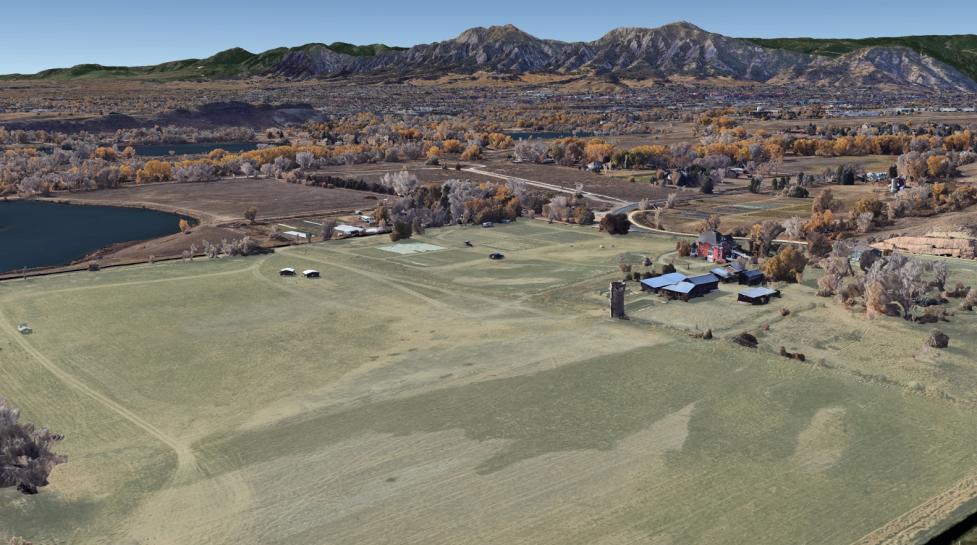The City of Boulder invites community members to help prioritize ideas, stories and perspectives that will shape an educational, reflective and healing trail on the city’s Fort Chambers/Poor Farm site, one of the city’s most historically important open space areas.
This phase of work to develop a planned healing trail builds on community input gathered earlier this year, when community members were asked to share their ideas, stories, and perspectives for interpretive elements. Understanding the breadth of potential stories, the city is now seeking additional guidance to help determine which ideas, stories or themes should be featured along the planned healing trail.
The trail is a key element of a collaborative stewardship plan developed with Arapaho and Cheyenne Tribal Representatives last year. The plan guides how the city will care for the Fort Chambers / Poor Farm site—land where more than 100 Boulder-area men trained before participating in the 1864 Sand Creek Massacre. Community members can help prioritize the ideas and shape what will be represented along the trail through:
- A community workshop that will be facilitated by Ernest House Jr., director of the Center for Tribal and Indigenous Engagement at the Keystone Policy Center. It will be held from 5 to 6:30 p.m., on Tuesday, June 17, at the Open Space and Mountain Parks Hub, 2520 55th St.
- An online questionnaire open through Monday, June 30, inviting the public to reflect on and prioritize community members’ ideas shared earlier this year.
The city encourages the public to explore the initial input gathered in the first step of this effort, which focused on identifying all potential ideas, stories and perspectives that could be shared along the healing trail.
Fort Chambers and the Sand Creek Massacre
The healing trail is planned for city-managed open space near 63rd Street and Jay Road northeast of Boulder. This land is the likely site of Fort Chambers, constructed by community members in the summer of 1864. From mid-August to mid-September of that year, Boulder County men mobilized into Company D of the Third Colorado Cavalry Regiment at the fort and later participated in the Sand Creek Massacre. Before the massacre, Company D attacked a Cheyenne camp near present-day Sterling (then called “Buffalo Springs”) on Oct. 10, killing four Cheyenne women, three men, two babies, and one boy.
Community members can learn more about the Sand Creek Massacre by visiting History Colorado’s exhibit, “The Sand Creek Massacre: The Betrayal that Changed Cheyenne and Arapaho People Forever.” Additional information about Fort Chambers, Company D and the massacre is available through a city webpage and online story map.
Land’s Other Important Features
A detailed story map provides background on the land’s additional historical, ecological, and agricultural features:
Next Steps
This is the second of five community engagement opportunities planned for this project. The community input from this engagement will be used in the next phase to explore how community-prioritized stories will unfold along the healing trail. That could include interpretive signs, historical markers or monuments. The city thanks Arapaho and Cheyenne Tribal Representatives for helping to guide stewardship of the Fort Chambers / Poor Farm Site, shaped by a shared city-Tribal vision of “Heal the Land; Heal the People.”
